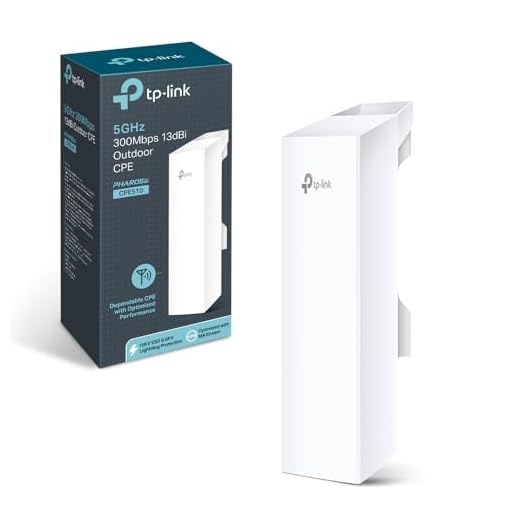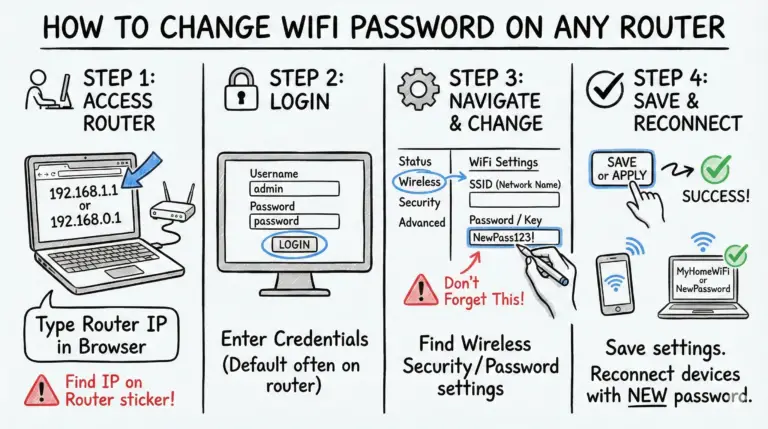In today’s hyper-connected world, having a strong and reliable WiFi connection throughout your property is not just a luxury – it’s a necessity. But for many homeowners, getting a good WiFi signal in their detached garage can be a real challenge. The distance between the house and the garage, as well as obstacles like walls and metal objects, can significantly weaken the signal strength.
Don’t worry though! In this comprehensive guide, we’ll explore several effective methods to extend your home’s WiFi network to your detached garage. Whether you’re looking to create a functional workshop, a gaming room, or simply need internet access for smart devices, we’ve got you covered.
How to Extend WiFi to Detached Garage – Factors to Consider
Before diving into the solutions, it’s essential to assess your specific situation. Consider the following factors:
- Distance: How far is your detached garage from your main house? The greater the distance, the more powerful the WiFi extension solution you’ll need.
- Construction Materials: The type of walls in your house and garage can impact WiFi signal penetration. Materials like concrete, brick, and metal tend to interfere more than drywall.
- Connected Devices: How many devices do you plan to connect in your garage? More devices will require a stronger, more stable connection.
- Online Activities: Will you be mostly browsing the web, or do you plan to stream high-quality video? Bandwidth-intensive activities will necessitate a faster connection.
- Budget: Some WiFi extension methods are more affordable than others. Determine how much you’re willing to invest in this project.
Now, let’s explore the different ways you can extend your WiFi to your detached garage!
Method 1: Use a WiFi Range Extender
A WiFi range extender, also known as a WiFi repeater or booster, is a device that picks up your existing WiFi signal, amplifies it, and then rebroadcasts the boosted signal. Here’s how to effectively use a range extender:
- Placement: For optimal performance, place the extender halfway between your main router and your garage. This allows the extender to receive a strong signal from your router and effectively extend it to your garage.
- Product Recommendations: Some top-rated WiFi extenders include the NETGEAR EX7000, TP-Link RE650, and Linksys RE7000. Look for extenders with dual-band support and high gain antennas for the best results.
Pros:
- Easy to set up
- Relatively affordable
- Can be used to eliminate WiFi dead zones in other areas of your property
Cons:
- Can reduce overall network speeds, as the extender has to receive and rebroadcast the signal
- Effectiveness may be limited by distance and obstacles



Method 2: Install an Ethernet Cable from the House to the Garage
Running an Ethernet cable directly from your house to your detached garage provides the most reliable, high-speed connection. Here’s how to go about it:
- Cable Burial: To protect the cable from the elements and accidental damage, bury it in a protective conduit at least 18 inches underground.
- Wireless Access Point: Once the cable is run to your garage, connect it to a wireless access point (WAP) to create a new WiFi network in the garage.
Pros:
- Provides the fastest, most stable connection possible
- Eliminates potential for wireless interference
- Allows for the creation of a separate network in the garage
Cons:
- Installation can be labor-intensive and may require professional help
- Burying the cable can be expensive, especially for longer distances
Method 3: Set Up a Point-to-Point Wireless Bridge
A point-to-point (PtP) wireless bridge uses two directional antennas to create a dedicated wireless link between your house and garage. Here’s what you need to know:
- Equipment: You’ll need two wireless bridge devices, such as the Ubiquiti NanoStation or the TP-Link CPE510.
- Line-of-Sight: For the best performance, the two antennas need to have a clear, unobstructed line-of-sight between them.
Pros:
- Provides faster speeds and lower latency than a WiFi extender
- Doesn’t require running any cables
- Dedicated link ensures minimal interference from other devices
Cons:
- Requires a clear line-of-sight between the two antennas
- Setup can be more complex than other methods
- Higher cost than WiFi extenders


Method 4: Use a Powerline Networking Kit
Powerline networking adapters use your home’s existing electrical wiring to extend your network connection. Here’s how it works:
- Setup: Plug one adapter into a power outlet near your main router and connect it to the router via Ethernet. Then, plug the second adapter into an outlet in your garage and connect it to your device or a wireless access point.
- Considerations: The effectiveness of powerline networking depends on the quality and layout of your home’s electrical wiring. Homes with older or complex wiring may experience slower speeds.
Pros:
- Easy to set up – no cables to run or antennas to install
- Can be a good alternative if wireless solutions aren’t feasible
Cons:
- Performance is dependent on the quality of your electrical wiring
- May not be suitable for homes with old or complex wiring
- Speeds may be slower than other methods
Method 5: Mesh WiFi Systems
Mesh WiFi systems consist of a main router and multiple satellite nodes that work together to create a seamless, broad-reaching WiFi network. To set up a mesh system for your garage:
- Place the main router in a central location in your home.
- Position one of the satellite nodes in your garage, ensuring it’s within range of the main router.
- Configure the system according to the manufacturer’s instructions, which usually involves a user-friendly mobile app.
Mesh systems are designed to provide consistent, reliable coverage throughout your property. They are particularly useful for larger homes or properties with multiple outbuildings. Popular mesh system options include Eero, Google WiFi, and Netgear Orbi.



Optimizing Your Garage WiFi Experience
Regardless of which extension method you choose, here are some additional tips to ensure the best possible WiFi performance
- Router Placement: Make sure your main router is located centrally in your house to provide the best coverage.
- Upgrade to Mesh: If you’re looking to improve WiFi coverage throughout your entire property, consider upgrading to a mesh WiFi system like Google Nest WiFi or Eero.
- Analyze Your Signal: Use a WiFi analyzer app on your smartphone to check signal strengths and identify any dead zones or interference sources.
- Update Firmware: Regularly check for and install firmware updates for your router and any WiFi extension devices to ensure optimal performance and security.
Troubleshooting Common Issues
Despite your best efforts, you may encounter some issues with your garage WiFi setup. Here are a few common problems and how to address them:
- Weak Signal Strength: If you’re experiencing a weak signal, try repositioning your router, access point, or extender. Additionally, ensure there are no obstructions or sources of interference between your devices.
- Device Connectivity Issues: If a device is having trouble connecting to your network, try resetting the device and your router. Also, make sure your device is within range of your WiFi signal.
- Professional Assistance: If you’ve tried troubleshooting on your own and are still experiencing issues, don’t hesitate to reach out to a professional. A qualified technician can help diagnose and resolve more complex network problems.
Future-Proofing Your Garage WiFi Setup
As technology continues to evolve, it’s essential to consider future-proofing your garage WiFi setup. Keep an eye on emerging WiFi technologies and standards, such as WiFi 6 (802.11ax), which offers faster speeds, lower latency, and better performance in congested environments.
Additionally, think about scalability if you plan on adding more smart home devices to your network. Ensure your setup can handle the increased demand for bandwidth and connected devices.
Finally, don’t forget about regular maintenance and upgrades. Periodically check for firmware updates, replace outdated equipment, and reassess your network’s performance to ensure you’re always getting the best possible experience.
Conclusion
Extending your home’s WiFi network to your detached garage doesn’t have to be a daunting task. By assessing your specific needs and choosing the right extension method, you can enjoy strong, reliable internet access in your garage.
Whether you opt for a simple WiFi extender, a hardwired Ethernet solution, a point-to-point bridge, or a powerline networking kit, the key is to choose the method that best fits your budget, technical skills, and performance requirements.
With a solid WiFi connection in your garage, you’ll be able to transform the space into a functional workshop, a home office, or an entertainment area. The possibilities are endless! So go ahead and implement the WiFi extension solution that works best for you, and start enjoying the benefits of a fully connected home.
- How to Configure a Secure Site-to-Site VPN on Cisco Firepower Complete Guide - December 3, 2025
- Jobs for Network Engineers: Roles, Skills & Pay - December 3, 2025
- How to Change WiFi Password on Any Router : The Last Guide You Need - December 1, 2025





